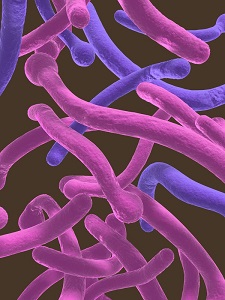
Candida is a form of yeast that exists naturally in everyone. It is normally harmless and is simply present in the body but Candida is also the most common cause of fungal infections. Many species of Candida are harmless, however when mucosal barriers are disrupted or the immune system is compromised they can invade and cause disease. The introduction of antibiotics, although good, can cause the good bacteria that keeps Candida cells at bay, to die and let Candida take over. Candida are pretty much a norm in low numbers on healthy adult skin and is part of the normal flora of the mucous membranes of the respiratory, gastrointestinal, and female genital tracts. It is when there is overgrowth that problems arise.
The following are several causes of increased Candida cells:
- Antibiotics. Antibiotics are a common cause of Candida. Antibiotics destroy both harmful bacteria and good bacteria. When antibiotics destroy friendly bacteria it gives the Candida a chance to begin to multiply. If you’re taking more than 1 course of antibiotics you will often have a Candida or yeast infection.
- Birth Control Pills or Device. Oral birth control pills are mostly the hormone estrogen. Supplemental estrogen in the synthetic form has been found to promote the growth of yeast.
- Excessive Stress and Elevated Cortisol. Stress causes the release of a certain hormone called cortisol. Cortisol can depress the immune system and also raise blood sugar. The elevated blood sugar can feed the yeast cells allowing them to grow quickly.
- Tap Water Consumption. Common tap water is high in chlorine which has been found to destroy friendly intestinal bacteria allowing candida to grow.
- Constipation. Constipation can be caused by candida and can also lead to candida.
- Drugs and Alcohol. Excess alcohol can directly destroy bacteria and allow yeast to grow. Drugs can also cause yeast overgrowth particularly if they disturb the digestive system.
- Hypothyroid. Low thyroid is very common in cases of candida.
- Immune Deficiency. Any condition that results in a weakened immune system can bring about candida.
- Hormonal Imbalance. An imbalance between estrogen and progesterone can be a causative factor in yeast overgrowth.
- Excessive Bowel Cleansing. Colonic irrigation and bowel cleansing too frequently can eliminate all the friendly bacteria and allow candida to grow.
- Diabetes.
- Toxic Metal Connection. Toxic metals such as Mercury, Copper and Arsenic are usually present in the candida patient. These metals disable the exact part of the immune system that seeks to control candida.
Candida has been linked to a number of symptoms such as allergies, IBS, migraines, depression, arthritis, PMT and many other illnesses and chronic conditions. You can remove the excess candida in your body just by modifying your diet. Talk to your trainer or dietitian to make sure the diet is right for you before getting started. If following a Candida Diet, you should avoid grains (including bread and pasta), beans, potatoes, dairy and sugar and eat proteins ( red meat, chicken and fish), eggs, fruits, vegetables (especially root vegetables and leafy greens), nut (no peanuts or cashews) and berries. A Candida diet is typically higher in nutrient density than what we are most likely used to.
Now that you are more aware of what Candida is, what can cause it, you can with the help of your trainer and dietician choose a healthier diet.
For more articles go to http://lifesportfitness.lifestyleezine.com
